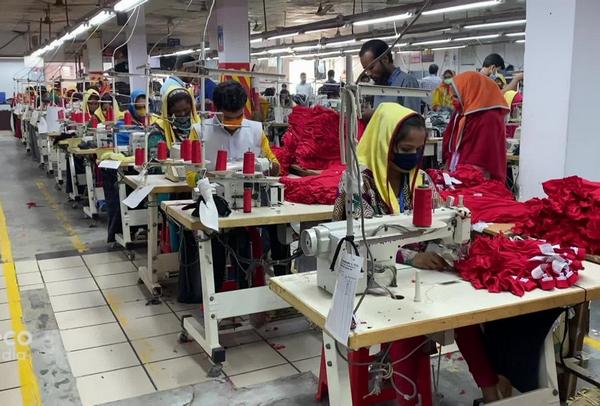Introduction:
Production capacity in manufacturing industry is the number of items employees can produce in a specific period of time, like an hour, day or week. In the garment industry, production capacity is one of the significant criteria used for merchant selection by the buyers. So it is crucial that the marketing and planning department should be conscious about the production capacity of the production lines. Production capability of a garment factory is mainly stated by means of total machines in the factory or number of pieces the factory produces on a daily basis for the specific product style. Normally, total numbers of machines in an industry remain the same for a particular period of time. But an industry could manufacture different styles of product during the particular season. According to the style, the machinery requirement could change and the average production in each style may differ. To determine the daily production capacity in terms of number of pieces, the information such as factory capacity in terms of hours, SAM of the product and line efficiency is needed.
How to Calculate Production Capacity of a Garment Factory:
Production capacity of a garment factory is totally related with machine (hr) capacity, line efficiency of that factory and standard allowed minute (SAM) of produced item. For achieving accurate production capacity of a garment factory, an industrial engineer should confirm accurate cutting room capacity, finishing room capacity and washing capacity also.

Estimation of production capacity of a garment factory is an important issue in ready-made garment sector. It plays an important role to the buyer for selecting right vendor for their orders. Calculating the production capacity of a garment factory involves considering various factors to determine the maximum output that can be achieved within a specific time frame.
For calculating production capacity of a garment factory, an industrial engineer should confirm the below information:
- Machine (hr) capacity per day = number of usable machines x hours employees can use machines
- Individual product’s standard allowed minute (SAM),
- Line efficiency of garment factory or factory efficiency.
Various factors for calculating production capacity of a garment factory are summarized below.
1. Calculation of Factory Capacity (in Hours):
For the calculation of this we need the number of machines in the garment unit and the number of running hours per day. For example, if
Total number of machines = 300
Shift hours per day = 8 hours
Then total factory capacity (in hours) = 300 × 8 hours = 2400 hours.
2. Calculation of Product SAM:
The SAM of different product styles has to be obtained from the industrial engineer in the factory through proper study.
3. Factory Average Efficiency:
This information is collected from the industrial engineer or could be calculated from past data. Assume the average line efficiency is around 50%.
4. Calculation of Production Capacity (in Pieces):
With the above data, the following formula could be used to determine the production capacity:
……………………………………. ………..Capacity in hours x 60
Production capacity (in pieces) = ————————————— x line efficiency
…………………………………. ……………..SAM of product
For example, a garment industry has 8 sewing lines and each line has 30 machines for a total of 300 machines and a working shift is 8 hours per day. Total factory capacity per day is 2400 hours (300 machines × 8 hours). If a garment industry is making a formal shirt having a SAM value of 28 minutes and has utilized daily production capacity of all 320 machines at 55%, then
= (2400 x 60/28) x 55%
= 2828 Pieces
Conclusion:
Calculating the production capacity of a garment factory is a crucial step in planning and optimizing manufacturing operations. By considering factors such as available working hours, individual operator efficiency, and standard minutes per garment, manufacturers can estimate the maximum output that can be achieved within a specific time frame. It’s important to recognize that production capacity calculations are estimates and can be influenced by various factors such as machine breakdowns, material availability, and workforce variability.
You may also like:
- Productivity Improvement Techniques in Garment Industry
- Garment Manufacturing Process: Step by Step Section Wise
- Efficiency and Productivity of Sewing Line
